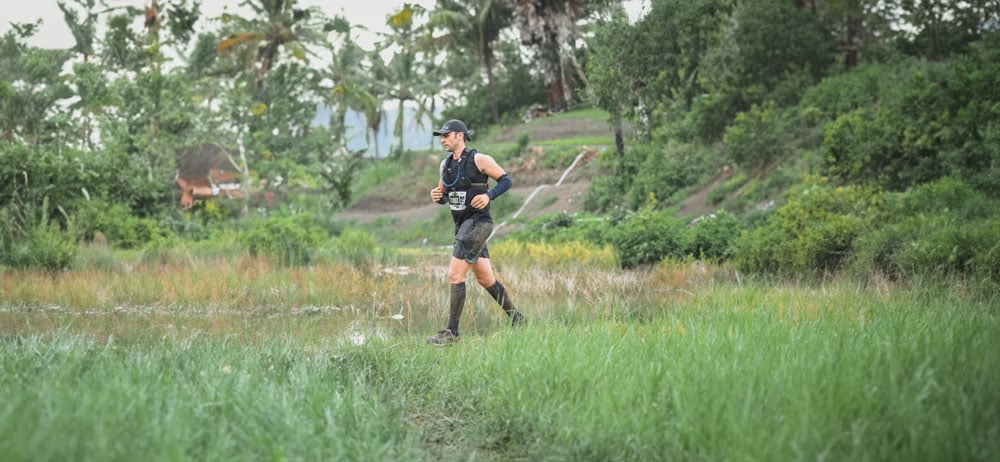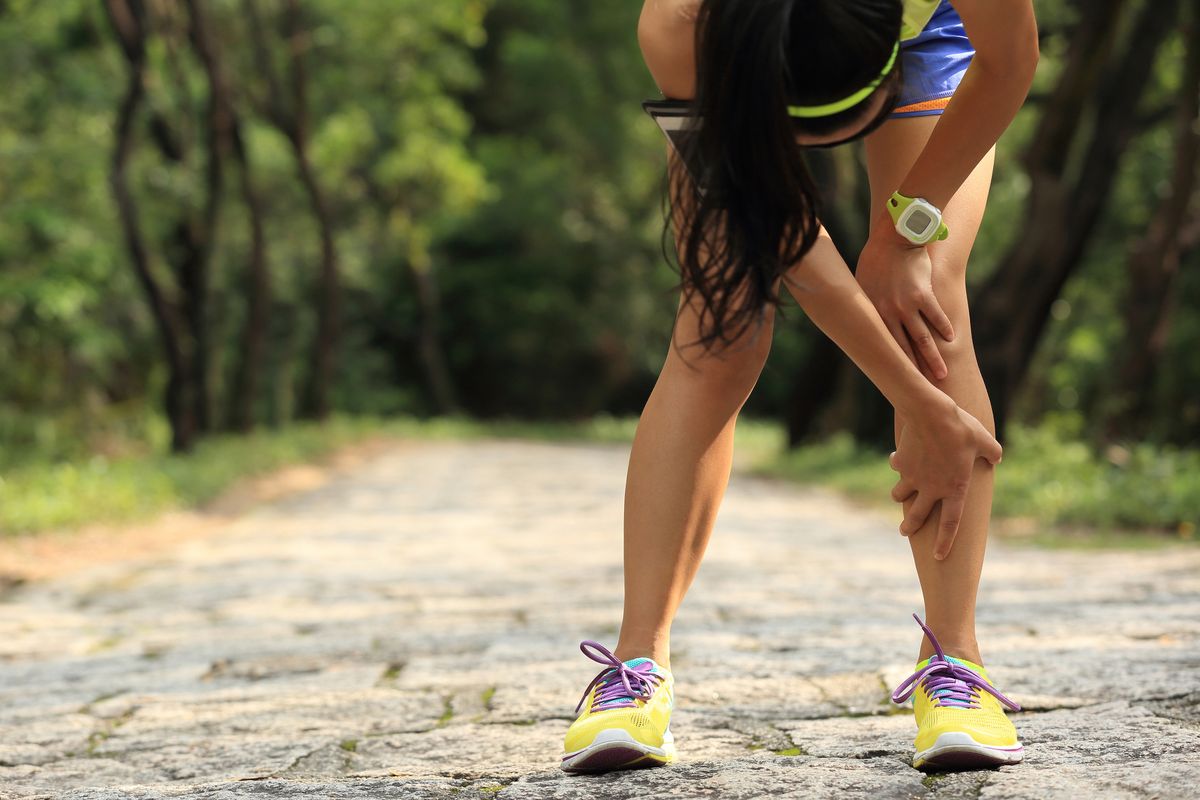Whether you’re lacing up your shoes for the first time or you’ve been conquering the trails for years, this article is crafted with you in mind.
Let’s make something crystal clear: trail running is an evolving journey.
And no one can deny it. The more you lace up and hit those trails, the better and bolder you become. But that doesn’t mean that strength training doesn’t deserve a spot on a trail runner program.
Here’s the truth. Strength training isn’t just about looking buff or flexing for the gram. It’s also about upgrading your running machine and protecting yourself from those overuse injuries. The is especially the case for trail runners.
That’s why today I decided to delve deep into some of the best exercises for trail runners. But before I do that, let’s first discuss how strength training can help level up your trail running escapades.
Why Every Trail Runner Needs This
Here’s what today’s article will help you accomplish:
For Beginners:
If you’re just starting out, this guide will give you a foundation of exercises to kickstart your trail running journey. These exercises aren’t just about muscle strength; they’re about giving you the confidence to tackle those trails, knowing your body has got your back (and legs and core!).
For The Seasoned Runners:
Think you know all there is to know? Well, consider this: even the best can always find ways to improve. These exercises might remind you of the basics or introduce you to something new. Maybe you’ve missed out on an exercise that could be your new secret weapon against those challenging trails.
So, whether you’re at the start line of your trail running adventure or miles deep into the journey, these exercises are here to ensure every step you take is stronger, safer, and more efficient. Embrace the challenge, and let’s hit those trails together!
The Benefits Of Strength For Trail Runners
Here are five game-changing reasons why you should be hitting the weight room as a trail runner:
Build Power
Let’s talk glutes, hamstrings, quads, and calves. A little love for these muscle groups, and boom! You’ll be powering up those hills with an ease that surprises even you. Like a mountain goat, but in trail shoes.
Descend Like a Pro:
Ever felt that slightly out-of-control sensation when descending? Strength training has got your back (and your knees, and your ankles). It preps your muscles for that controlled resistance against gravity, making downhill runs smoother.
Improve Technique
Make it even better with a power pose. A solid core workout routine ensures you’re running with the kind of upright posture that screams confidence. Plus, efficient breathing? Check!
Become Incline-Proof:
Hill running can take a toll on your body. But with strength training helps you fortify your tendons, muscles, and ligaments. This, in turn, protects you against injury, both in the short and the long term.
Improve Stamina
Strength training doesn’t just boost your hill prowess; it also amps up your stamina big time. Imagine crushing those hills and still feeling pumped for more. Sounds like a dream? Well, it’s totally achievable.
The Rules of The Game
As you get into strength training, keep in mind that this isn’t a race to see who can lift the heaviest or jump the highest. It’s about steady, safe progress. Here’s how to ace it:
- Start light: Begin with a weight that feels manageable. If you can do your reps without compromising form, you’re golden.
- The 10% rule: When increasing weights, aim for no more than a 5 to 10% increase at a time. This helps your body adjust without going into shock mode.
- Rest and recover: Think of rest days as your body’s pit stops. It’s when the magic of muscle repair and strengthening happens.
Modifications for Specific Injuries or Limitations:
Before you try any of the following exercises, please make sure abide by the following, especially if you’ve a history of the mentioned issues.
- For Bad Knees: Avoid high-impact exercises like jumps. Instead, focus on low-impact strength training like wall sits or resistance band exercises. If doing squats, consider a half-squat to reduce pressure on the knees.
- For a Weak Lower Back: Strengthening your core is vital. Planks or bird-dogs are great exercises that can be incorporated. When doing deadlifts or squats, always prioritize form over weight. Use lighter weights until you’re confident in your technique.
- For Ankle Issues: Balance exercises are a game-changer. Try standing on one foot, progressing to doing it with closed eyes, or on an unstable surface like a pillow.
- For Shoulder Pain: If holding weights overhead or in front of you is painful, consider weight-free exercises or use resistance bands as a gentler alternative.
The Strength Exercises For Optimal Trail Running
Without further ado, let’s get into the exercises you need to fortify your trail running game
Single-Leg Deadlifts
Apart from making you feel like an absolute fitness god/goddess, single-leg deadlifts target the often-neglected hamstrings, glutes, and hips. A study from the Journal of Sports Science & Medicine highlighted the importance of hamstring strength, especially in athletes, to reduce the risk of injuries.
Proper Form
Stand tall with a hint of sass! Keep those knees slightly bent, feet chatting away hip-width apart. Grasp a dumbbell in each hand, letting it rest against your thighs.
Keeping your spine neutral (think of it as your proud warrior pose!), lift one foot off Mother Earth. Now comes the fun part: hinge at the hip while raising your back leg.
Lower those dumbbells gracefully down your legs, halting the journey just below the knees.
Give it a pause – savor the moment! Then, with power, press back up, owning your starting position.
Rinse and repeat. As you groove, you should feel a teasing pull in the glutes and hamstrings, whispering, “You’re doing it right!”
Don’t forget to switch sides – let’s keep things fair and square!
So, next time you’re at the gym or cozying up at home, sprinkle in some single-leg deadlift magic. Your hamstrings, glutes, and hips will sing songs of gratitude!
2. Single-Leg Forward Jumps
The single-leg forward jump is a full-blown strength training party for your calves, quads, glutes, and, hold your breath… your ENTIRE core! But there’s more. This plyo exercise is also your secret weapon to toughen up those ankles. Stronger ankles mean less risk of those dreaded sprains, especially if you’re someone always on the move.
Proper Form
Start by standing tall on your right foot. Engage that core – think of it as hugging your inner superhero! Keep that back flat like a plank, arms casually by your sides.
Here’s where the magic happens: using your arms like they’re wings, propel yourself forward, taking a leap of faith!
Remember, we’re aiming for distance, not the stars, so keep that jump controlled and gentle. Land like you’re stepping on eggshells – softly on your right foot.
Maintain your balance. If you wobble, that’s cool. It’s all part of the journey!
Time to show the left leg some love. Swap sides and repeat.
Pro tip: Feeling like a pro? Amp up the challenge by doing it with your eyes shut. Talk about trusting yourself! Additional resource – How to choose trail running gaiters
3. Box Jumps
Box jumps are like a full-throttle power-up for your legs and hips. You know that explosive drive you need when trail running or sprinting to catch the bus? That’s what these bad boys develop.
But there’s another ace up the Box Jump’s sleeve: they’re fantastic for building rock-solid knee stability. Because, let’s face it, wobbly knees on a run? No, thank you!
Proper Form
Start by positioning yourself, feet hip-width apart, behind your trusty box (or step/platform).
Engage that core like you’re prepping for a superhero landing. Keep your back poker-straight.
Ready for take-off? Hinge at the hips, swing those arms back for momentum, and then – launch forward and upward onto that box.
Aim to land squarely with both feet and knees at a comfy 45-degree angle. Think of it as a soft, controlled landing rather than a thud.
Relax those shoulders, neck, and head. You’re jumping, not stressing!
Glide back down to your starting position and blast off again!
As you get more confident, challenge yourself: up the number of reps or elevate the height of your jump.
So, are you ready to jump into one of the best plyometric exercises out there? Lace up those shoes, and let’s get airborne with Box Jumps!
4. Bulgarian Split Squat
Along with giving your quads a serious workout, Bulgarian Split Squats are stellar at activating stabilizer muscles. These are the unsung heroes that amp up your balance and coordination, ensuring you’re steady no matter the terrain.
Proper Form
Kick things off with a pair of dumbbells or kettlebells in hand. Position yourself for a lunge, but here’s the twist: your back foot should be perched on a box or bench about one to two feet high.
Engage that core! Think of it as your body’s natural seatbelt, keeping everything aligned.
As you lower yourself, keep your back straighter than a ruler. Bend the front knee, making sure it never sneaks past your toes.
Aim to lower until that front thigh is parallel to the ground. Feel that burn? That’s the magic happening!
Hold it for a beat, then power back up, squeezing those glutes with gusto.
So, ready to add some Bulgarian flair to your workout routine? Give this mighty squat a whirl, and watch those quads flourish!
5. Plyometric Lunges
These aren’t just for showing off at your next fitness class. Plyometric Lunges help develop explosive power in your legs, which is vital for those uphill bursts. Plus, they enhance your reactive strength, making sure you’re nimble-footed on unpredictable trails.
Proper Form
Stand tall, oozing confidence. Step one foot forward into a lunge, ensuring both knees are bent at a 90-degree angle.
Now for the fun part: explode upwards, using your arms for momentum, and switch legs in mid-air. Land softly into a lunge with the opposite foot forward.
Keep your core engaged, posture upright, and ensure your knees don’t overshoot your toes. We’re lunging, not diving!
Mix It Up!
To Challenge Yourself: Add some hand weights or increase the speed of your lunges. Feel that extra burn? That’s progress!
For A Kinder Approach: If the jumping feels too intense, stick to alternating reverse lunges. It’s the same movement, minus the aerial acrobatics.
6. Plank to Push-Up
Strengthening the core is crucial for maintaining posture and stability during those long trail runs. Plus, having a strong upper body ensures you have the balance and strength to ward off any accidental trips or falls.
Proper Form
Start in a plank position, forearms on the ground, body straight from heels to head.
Push up from your forearms, placing one hand at a time on the ground until you’re in a high plank or push-up position.
Lower back down onto your forearms one arm at a time.
Maintain a strong core, ensuring your hips stay level throughout. No twerking here!
Switch Things Up:
To Ramp Up The Heat: Add a push-up every time you come into the high plank position. Because, why not?
To Ease On Down: Stick to holding a forearm plank, focusing on keeping that core engaged and body straight.
Listen To Your Body
Although I’m a big fan of pushing oneself out of comfort zone, there’s one thing you shouldn’t do: push our body too far.
Imagine your body’s like a vintage radio, always tuning in and sending signals.
Sometimes, it plays rock anthems that scream, “Go for it!” Other times, it’s a soulful ballad saying, “Take it slow.” The key? Always be listening.
Signs Your Body’s Is Under Too Much Duress:
Overtraining is like that annoying song that gets stuck in your head—nobody wants to be overtrained but it sometimes sneaks up on the best of us. To stop it in its tracks, look out for:
- Persistent soreness.
- Fatigue that makes a sloth look hyperactive.
- Sleep disruptions.
- Mood swings.
- Decreased performance.
- Unplanned weight loss
- Chronic aches and pains
- Elevated heart rate











